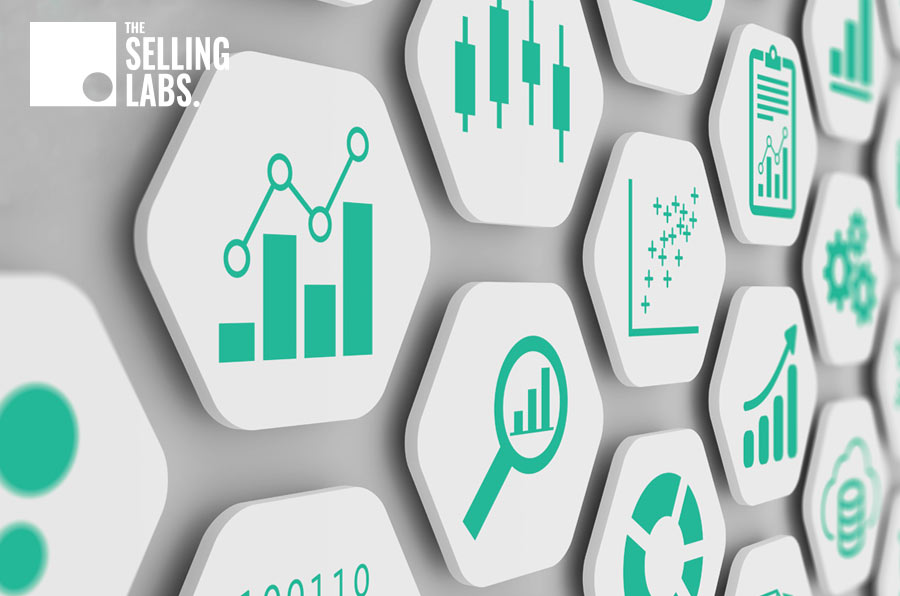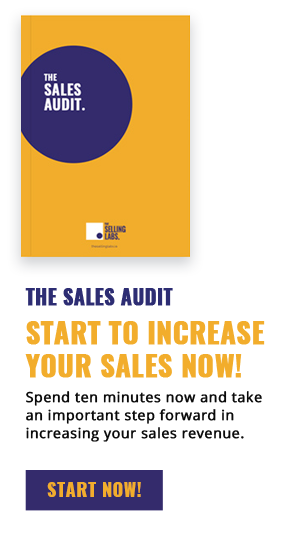The Complete Guide To SaaS Metrics
How do you evaluate the success of SaaS companies? Key Performance Indicators, or KPI for short, play a vital role in tracking whether the business is going in the right direction. KPIs act as goals for the strategy. You will need metrics, and more exactly SaaS metrics to monitor your business development, progress, and health. As a rule of thumb, SaaS metrics are measurable benchmarks that SaaS companies use to track growth. They are crucial to the survival of the SaaS business as customer acquisition is no guarantee of long-term revenue growth if you can’t control customer retention and the cost associated with both activities.
We appreciate that SaaS businesses can find it tricky to make sense of the SaaS metrics available. Having discussed sales metrics before we’ve now designed a guide to help you understand how to read SaaS metrics, what they mean, and how to use them to support your sales team.
Contents:
- Customer Service Metrics
- Onboarding Metrics
- Pricing Metrics
- Renewal Metrics
- Enterprise Metrics
- Financial Metrics
- Success Metrics
- Key SaaS Metrics
- Dashboard Metrics
- SaaS Sales Metrics
- SaaS Metrics 2.0
- SaaS Metrics LTV CAC
- SaaS Consulting
SaaS Customer Service Metrics
Are customers happy with your products? Contrary to common belief, how many customers you have is no indication of how much value they get from your SaaS applications. To measure customer satisfaction, you need to quantify customer service and customer success. Traditional business metrics tend to rely on customer feedback and survey activities to monitor satisfaction levels. But as a SaaS company, you can save yourself the trouble of compiling and analyzing their responses by using key metrics that reveal how they interact with your products.
Net Promoter Score NPS: The Net Promoter Score NPS asks existing customers how likely they are to recommend the SaaS application. Ranked on a scale from 1 to 10. Scores between 1 and 6 are Detractors, and those between 9 and 10 are Promoters. Anything in between is neutral and doesn’t count in the NPS calculation.
NPS score = % Promoters – % Detractors
Active Users: SaaS businesses need to track daily active users or monthly active users to understand how many unique customers use the product. Ideally, the number of active users should be growing as it reveals that customers are satisfied with the application. Stagnant or shrinking numbers can highlight issues with your SaaS service.
Customer Retention Rate: The retention rate ultimately shows how many users are getting value from your solution. A low retention rate can be used to target inactive users and request additional feedback. SaaS businesses need to avoid customer churn (aka customers leaving) by identifying issues ASAP. You will need the number of active users to calculate it for each period:
Retention Rate = Number of active users/ Number of total users
Net Customer Renewal Rate: The renewal rate is a great indicator of customer success. It refers to existing customers who upgrade their services or renew their accounts. Ideally, you want a net renewal rate that’s over 100%, as it means the rate of expansion and renewal is higher than your churn rate.
Net Customer Renewal Rate = (value of renewal + value of expansion ) / total value of contracts up for renewal x 100
Customer Satisfaction Score: The customer satisfaction score is a numerical value that paying customers provide about the product of the SaaS company. Typically the score uses a scale from 1 to 5 or 1 to 10.
Customer Satisfaction Score = the total sum of scores / total number of participants
SaaS Onboarding Metrics
Customer onboarding is often confused with the customer engagement score. In reality, the customer engagement score is one of the key SaaS metrics of onboarding. Customer onboarding defines the core areas of focus for the customer success journey. Most SaaS companies tend to consider onboarding and customer engagement as part of the customer service metrics. The onboarding process has different milestones that define different steps.
A SaaS business will look at these essential customer onboarding SaaS metrics:
Time to Value: The average customer is familiar with the specific tools and systems used in their business. As a SaaS company bringing a new tool to their toolset, you want to make sure you can integrate it seamlessly with the existing software and solutions used in-house. Product configuration and settings will also help new customers to use the SaaS application quickly. When customers generate value from the application rapidly, they are more likely to be part of the recurring revenue generated. Otherwise, they might leave, increasing your churn rate.
Customer Engagement Rate: Customer engagement score monitors the number of active users in a specific audience group over a period of time. SaaS companies can review the engagement rate on a monthly and annual basis and it can be calculated for different stages of the onboarding process.
Customer Engagement Score = Total number of active users in an audience group for a period / total number of users in the audience group
Customer Progress: For SaaS solutions that require additional training and knowledge, it can be a good idea to monitor the progress through the training and usage of the application. It’s a good indicator of the accessibility of the application and its ease of use.
Free to Paid Conversion: Most SaaS companies track how many customers pay vs. how many are using free trials. Free trials are helpful to acquire customers. But they also enable potential customers to become familiar with the application. As such, the free to paid conversion rate delivers valuable insights into your SaaS onboarding process.
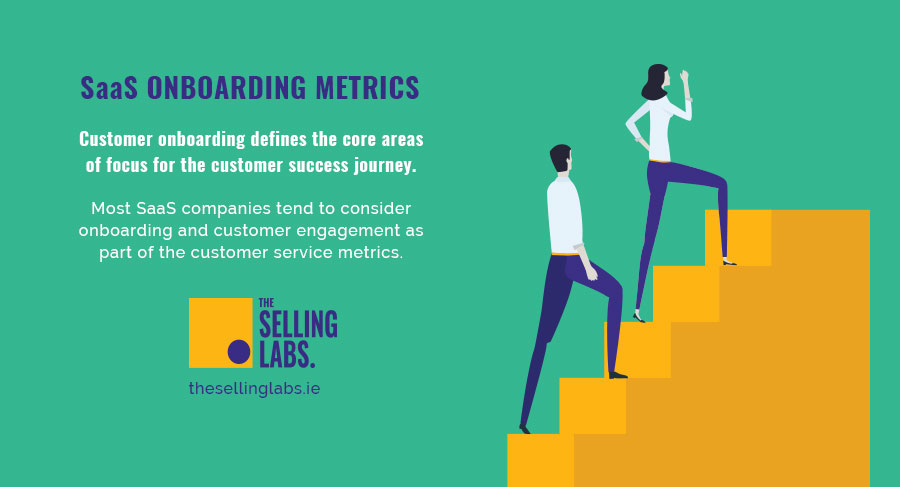
SaaS Pricing Metrics
The choice of a pricing model for SaaS companies is a delicate process. The right pricing strategy will keep your business in good health, attracting customers for future growth while keeping churned customers to a minimum. Therefore, SaaS pricing is one of the most important SaaS metrics; they help your SaaS business pick the right pricing model.
The key SaaS pricing metrics to consider are:
Gross MRR Churn Ratio: The gross monthly recurring revenue (MRR) is the percentage of the monthly revenue lost to account cancellation or downgrades. This will cause a revenue churn. SaaS companies can also use annual recurring revenue and annual revenue churn for yearly calculations.
Gross MRR churn = total recurring revenue churn for the month / total monthly recurring revenue x 100
Monthly recurring revenue MRR expansion and upgrade: The expansion MRR refers to the ratio of increase for the average monthly revenue. The upgraded MRR focuses on the expansion process for existing customers. Unlike new customers, they do not have any additional customer acquisition cost.
Net MRR Churn Rate: The net MRR churn rate gives a more accurate picture of the revenue lost vs. the expansion revenue. Ideally, you are aiming for a negative revenue churn.
Net MRR churn rate = (MRR churn rate – expansion revenue) / total MRR x 100
It is worth mentioning that the Net recurring revenue churn rate can be calculated for monthly revenues, using MRR churn rate, expansion MRR, and total MRR. But you can also calculate it using yearly revenues. In this case, rather than MRR values such as churn rate and expansion MRR, you will use annual recurring revenue and annual expansion revenue value.
Profitability: Profitability metrics compare the lifetime value LTV ratios and the customer acquisition cost CAC. These SaaS metrics will be explained in detail in a later point. A profitable SaaS business needs a pricing model that guarantees that the ratios for both the customer lifetime value and the cost of customer acquisition are greater than 1. A mistake that many SaaS businesses make is to lose money when they acquire new customers.
Saas Renewal Metrics
As important as acquiring customers is to the future revenue of the business, the customer revenue calculations also need to include returning customers. The SaaS sales model is built on accrued customer lifetime value. Indeed, all the revenue of a SaaS model relies on the acquisition of paying customers on a recurring monthly basis. Therefore, renewal SaaS metrics can provide valuable insights into the health of your company.
- Customer Renewal Rate: The renewal rate monitors customers among your existing customer base who renew their subscriptions. If you wish to calculate the renewal rate in terms of average revenue per account that renews, this is your renewed monthly recurring revenue MRR. For revenue-based calculations on renewal, do make sure to include expansion MRR, as in renewed subscriptions that have been upgraded.
- Customer Retention Rate: Retention is highly valuable to your business. SaaS companies can spend up to 5 times more finding new customers than maintaining customers acquired. As such, the question is not how much revenue customers generate but how many accounts stay with you. It makes no sense to reach a million customers if your SaaS company can’t manage to retain them.
- Customer Churn Rate: One of the most crucial SaaS metrics is your customer churn rate. To put it in simple terms, the higher your customer churn rate is, the more likely the business is to lose its total revenue. While customer churn is unavoidable for a variety of reasons, to maintain a healthy business, you need to aim for a negative churn rate with upgrades, retention, and new customers.
- Gross and Net MRR Churn Rate: As explained before, these SaaS metrics provide information about your total SaaS revenue using the average revenue per month as a base. The gross MRR churn rate is the percentage of revenue lost to cancellation or clients downgrading. The net MRR churn rate uses the expansion MRR to compared lost and gain revenues, monitoring your profitability.
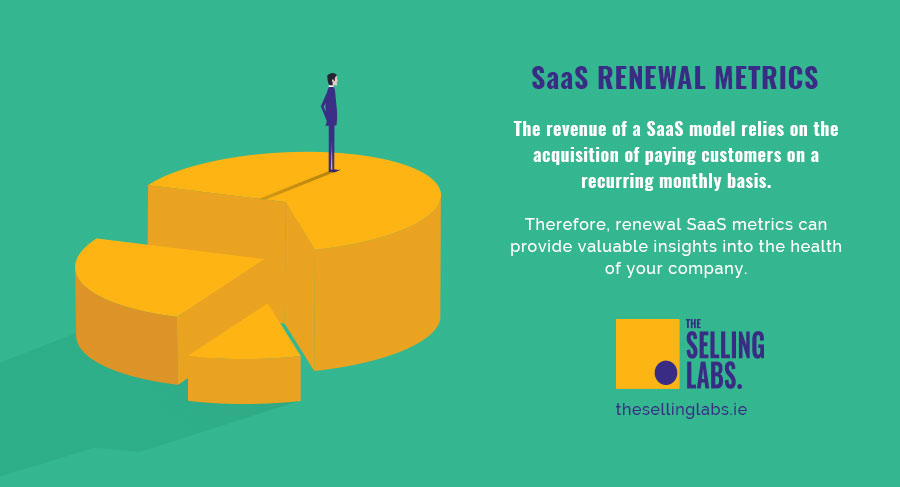
Enterprise SaaS Metrics
At an enterprise level, SaaS metrics need to showcase growth and profitability data. The metrics will combine sales and financial information at a high level.
- Churn Rate: The churn rate is a critical factor for scaling SaaS companies while preserving profitability. Indeed, the churn rate will determine the strategy behind the sales process.
- Burn Rate: The burn rate refers to how the business spends its cash supply. It will include the cost of monthly operations such as marketing budgeted activities and sales expenses. It is tempting for growing SaaS businesses to aggressively grow expenses, but a high burn rate can put the company at risk.
- Customer Lifetime Value: How long does a customer stay with your company? The projected lifetime value with the company can help calculate the average revenue per account (ARPA). This is how much revenue you can expect during the customer lifetime.
- Cost of Acquiring New Customers: How much money can a business afford to spend on customer acquisition processes? Understanding and managing this cost can support effective lead-generating marketing campaigns and operations throughout the sales funnel.
- NPS As mentioned above, the net promoter score highlights how likely your customers are to recommend the brand.
SaaS Financial Metrics
Financial tracking plays an essential role in maintaining your business afloat. The most important SaaS metrics for CFOs need to include the following information:
Monthly Recurring Revenue MRR = Number of customers x Average monthly contract value
Annual Recurring Revenue ARR = MRR x 12
Alternatively, you can also use this formula:
ARR = number of customers x Average annual contract value
The information from both MRR and ARR are similar, only the period changes.
Average Revenue Per Account ARPA: ARPA = MRR / number of clients in the customer base
Number of Reactivations/Expansions/Contractions: This refers to the numbers of formerly active clients reactivating their accounts, the number of clients expanding their contract value, or decreasing the value.
New business: This refers to the amount that newly acquired customers spend.
Other important SaaS financial metrics are:
- Churn rate
- MRR retention rate (Similar to customer retention rate, but it focuses on the percentage of MRR that is renewed monthly.)
- Customer retention rate
- Customer acquisition cost CAC
- Customer lifetime value CLV
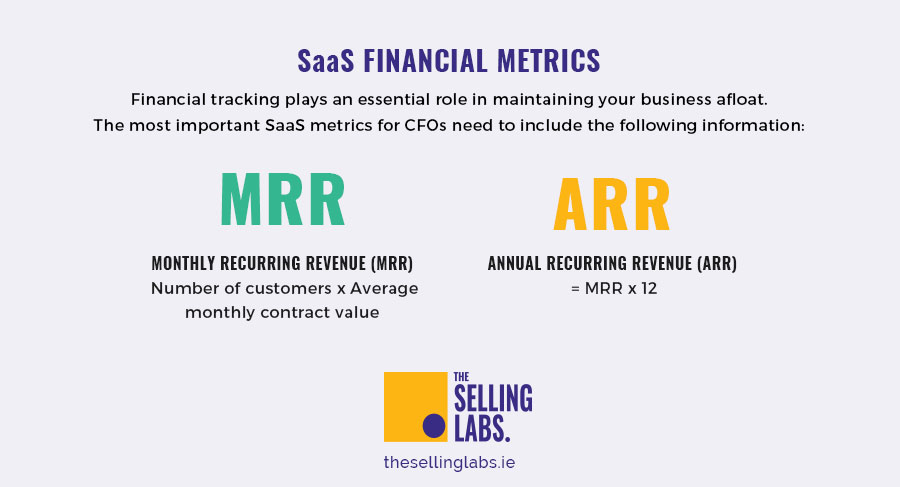
SaaS Success Metrics
SaaS companies need to pay close attention to the following SaaS metrics to build sustainable long-term growth:
Churn: Tracking churn is a vital part of sustaining your business. Churn compounds over time so that a 3% monthly rate adds an extra 3% every month. By the end of the year, you’re dealing with 31%, meaning you’ve lost a third of your customer base. Churn rate can be calculated per customer or revenue.
MRR / ARR: Recurring revenue is what makes the SaaS sales models appealing.
Activation Rate: This measure the moment users realize the value of the product. It can be calculated using marketing data analytics. The onboarding process often refers to it as time to value rate or metric.
CLV > CAC: We will review the correlation between success and these two metrics below.
Expansion Revenue: Expansion revenue can affect your churn rate, creating a negative revenue churn.
Net Promoter Score
Key SaaS Metrics
Understandably, it can be tricky to know which metrics are valuable when you are dealing with so much at the same time. The true answer is that everything matters. However, you can start your SaaS journey by focusing on the most meaningful metrics for your business. SaaS consultants and experts have identified relevant information that can help you gauge the health of the company.
Churn Customer & Churn Revenue: Depending on the average revenue per account ARPA, customer churn and revenue churn could take different meanings. In a low revenue per account model, churn may be less harmful than for high-paying customers.
Customer Lifetime Value:
Customer Acquisition Cost:
Time to Recover CAC: This metric monitors how many months it will take to recoup the cost of acquisition.
Time to Recover CAC= CAC / MRR x Gross Margin (Gross Margin= gross revenue – sales expense)
Ratio CAC/CLV
Customer Engagement Score
Qualified Marketing Traffic: The SaaS model relies essentially on digital traffic. Digital marketing activities are vital to lead generation. Marketing leads are passed onto the sales team for further nurturing following the best sales methodology and deal closing techniques for the industry/client. Yet, this process requires strict lead qualification. Marketing qualified leads need to be prospective customers who are ready to find out more about the solution. When the marketing qualified lead and the sales qualified lead definitions are misaligned, the business can waste money on acquisition and nurturing activities.
Lead to Customer Rate: How many leads become paying customers? This metric helps your sales and marketing teams understand how many qualified leads they need.
SaaS Metrics Dashboard
Unless you are going to create different SaaS reporting for each team, you want to invest in quality SaaS dashboard tools that can give you an overview. A dashboard allows teams to organize the key SaaS metrics that are meaningful for their activities. Indeed, as each team will need different metrics to track their goals, it makes sense to use customizable dashboard solutions. Whether your business is B2C or a B2B SaaS model having a good SaaS dashboard is a must.
A dashboard will keep everyone on the same page while ensuring teams can access the relevant information. For instance, the customer service and support team need to track customer tickets and queries. This will reflect on the satisfaction score. But, the sales team will need a dashboard that focuses on MRR, lead numbers, and the different steps of the sales funnel. On the other hand, the executive dashboard showcases revenue, losses, and overall profitability.
An additional advantage of using a dashboard function is the access to real-time data. Unlike a reporting tool that analyzes after the event, the dashboard can show interactions on the website, purchases, and retractions as they happen. So, you can spot issues rapidly to avoid bad surprises.
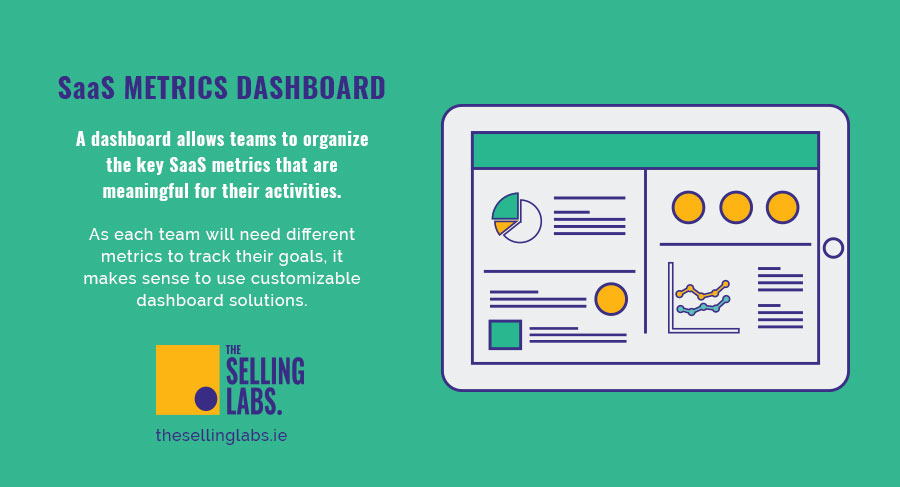
SaaS Sales Metrics
Once sales teams have their SaaS sales cycle nailed down the first question they ask about a is which SaaS metrics are relevant to me? The truth is due to the nature of the business, most metrics can influence sales activities.
However, for the sake of simplicity, sales reps should check in priority the top 5 SaaS sales metrics on their dashboard:
- Monthly Active Users
- MRR
- Conversion Rate
- CAC
- CLV
These need to be part of regular checks and monitoring. In addition, monthly reports can include helpful information to address disparities within the sales process and the sales and marketing strategies:
Churn
Lead Velocity Rate: This helps monitor your lead growth rate. It’s a real-time indicator of growth and performance that can rapidly react to new strategies and pricing models.
Lead-to-Close Rate: How many leads does it take to acquire a new customer? Understanding the metric will reveal a lot about the marketing and sales strategies effectiveness.
Lead at Each Funnel Step: This metric can highlight issues with the SaaS sales process and lead generation strategy, both at sales and marketing levels. It’s the opportunity to experiment with more aggressive marketing campaigns.
SaaS Metrics 2.0
The unique SaaS business model makes data analytics and metrics a core element of every operation and activity. So, if you’ve been working n the SaaS sector for a long time, it’s worth making sure that you are still using the best and more relevant metrics to improve your business. You need to understand how to use SaaS metrics to support growth.
Ron Gill and Brad Coffey, two experts in the SaaS field share their tips.
One of the most frequent issues for SaaS businesses is a cash flow problem, as companies need a long time to recover from the CAC losses. Balancing growth costs such as acquisition costs and wins can be challenging. Experts explain how to hit the right balance between growth rate and cash flow.
Losses are part of the launch of a SaaS company, so it is difficult for businesses to identify the signs of a viable business when you need to pay upfront cash to acquire customers. We strongly recommend getting familiar with the recommendation shared in SaaS Metrics 2.0.
SaaS Metrics LTV CAC
SaaS experts refer to customer lifetime value as CLV, CLTV, or LTV. All acronyms are interchangeable and refer to the same phenomenon. The LTV/CAC ratio compares the value that a customer delivers over its lifetime to the expenses of its acquisition. If the LTV/CAC ratio is less than 1, the company wastes money. It costs you more to acquire customers than they generate revenue.
As a rule of thumb, the recommendation is to aim for a ratio of 3 or greater to ensure the growth and success of your SaaS venture.
Top 10 SaaS Metrics
Below we have listed the most useful and versatile metrics in the SaaS industry. These metrics are typically part of dashboard reporting for sales, marketing, and customer support teams, as well as the executive board.
- MRR
- ARR
- Churn
- Retention rate for customers
- Net promoter score
- Active users
- Customer acquisition cost
- Customer lifetime value
- Conversion rate
- Average revenue per account
SaaS Sales Consulting
We hope this guide to SaaS metrics gives you the info you need to better understand SaaS. If your business is considering taking your SaaS sales to the next level and need help to maximize your sales, please don’t hesitate to get in touch with our team of experts.
On Expert Sales Tips
Get regular updates delivered straight to your inbox with expert sales tips for tech & SaaS companies. Enter your email below and start to increase your sales now.

